Non-profit Rona Scrubs achieves a 50% response uplift after switching to SMS

During a COVID virtual catch-up with a doctor friend, Annabelle Parsons identified a major blind spot when it came to healthcare worker’s basic protection against COVID: access to free medical scrubs. A little known fact is that many Australian healthcare workers, except for those who work in emergency or theatre, are forced to pay out-of-pocket for scrubs.
According to the Department of Health’s data in early August, more than 1000 health-care workers have been infected with COVID, and they make 11% of current active cases. Having regular changes of scrubs on hand could go a long way to protect these workers in medical environments where transmission is high. With rising infections and growing delays by scrub manufacturers, Annabelle wanted to find a way to help.
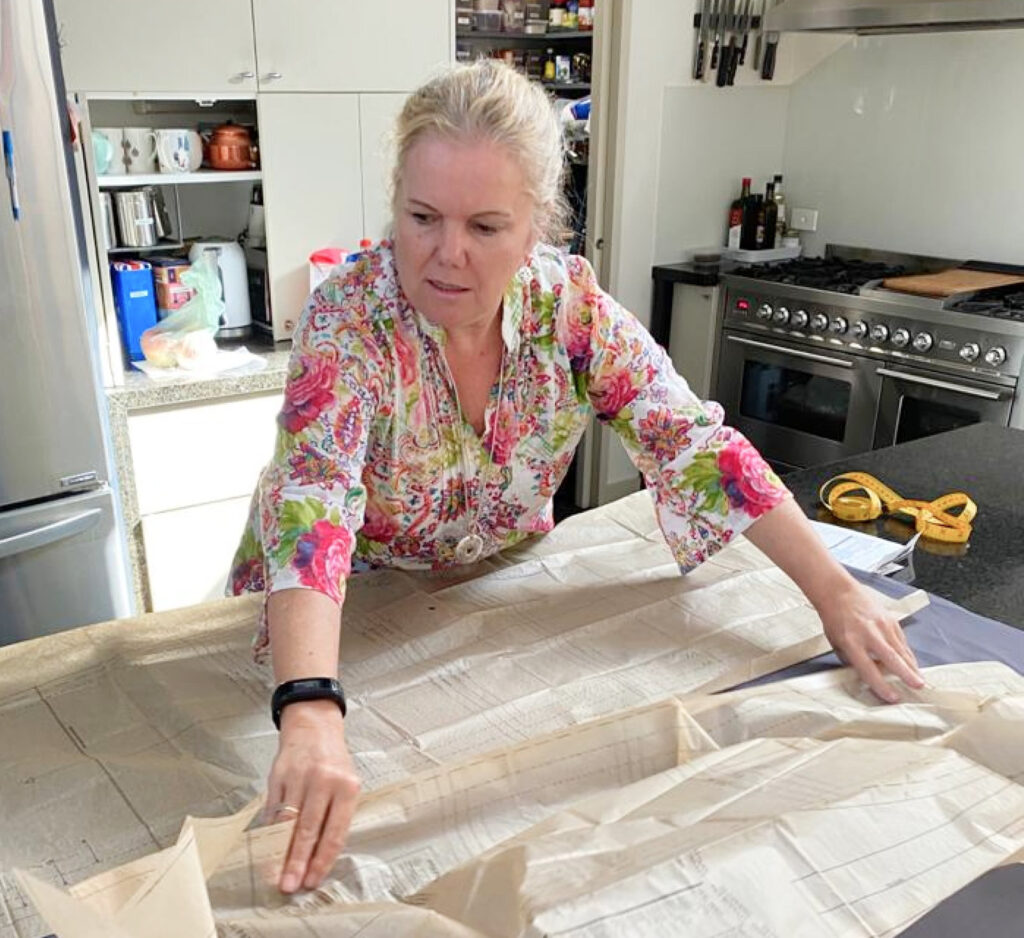
Annabelle saw two gaps:
- Making it easy and free for essential workers to get scrubs
- Help resolve the rising challenge of COVID spreading
In just one week, Annabelle had drawn together a core team for her new not-for-profit charitable organisation – Rona Scrubs. Their mission was simple: bring together volunteers at home, likely bored and wanting to help, who could sew scrubs for essential workers in need.
What began as a small circle of friends trying to help their loved ones and local communities soon gathered speed with thousands of Australians reaching out eager to make and distribute scrubs for workers on the frontline. Fabric partners were also clamoring to jump on board including Spotlight and Young Apparel who each donated over 10,000 metres of fabric. According to Annabelle, it got “very big, very, very quickly.”
The challenge
Because of how fast word was spreading, the team acted quickly. In order to cater to a national audience, the team came up with a system in which orders were dictated by a nominated volunteer called an archangel (distributor) who would manage angels (volunteer) and orders within a consigned government council area.
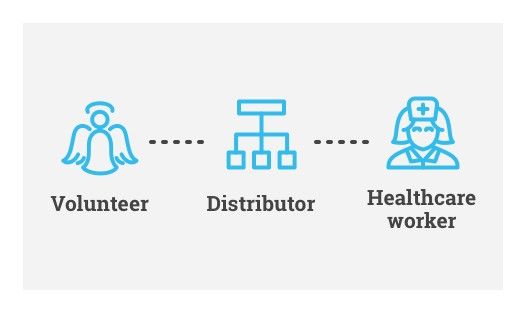
According to Annabelle, this was to stop volunteers from unnecessary, risky (subjective only)travel and to focus aid on essential workers within an archangel’s local area. Not only would archangels help volunteers get what they need to make their scrubs, they’re also tasked with organizing delivery including posting boxes or in some cases, contactless delivery right to the door of a hero (essential worker).
Because of how iterative the process was in first establishing Rona Scrubs, some problems arose including that of sizing. While they started out with an overly large scrub pattern to ensure inclusivity in sizing, this changed considerably as they moved towards more specific sizing. This led to confusion about which sizes were then meant for each order.
To solve the problem, distributors were tasked with confirming sizing with heroes through email. Because of the number of deliveries and the high expense incurred with returns, scrub sizing needed to be as correct as it could be on the first go.
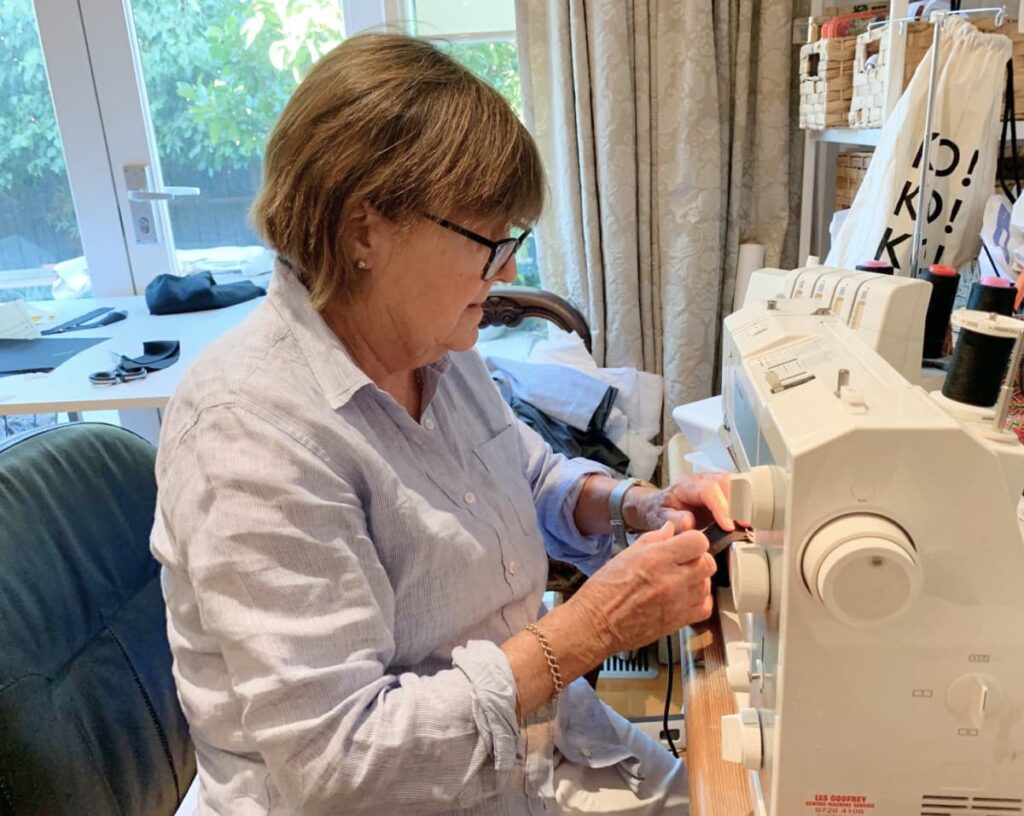
Email seemed like an easy solution although:
- Some distributors did not want to or were unfamiliar with setting up another email address
- If personal emails were used, they often did not come through or were immediately categorised as SPAM as they came from unknown emails addresses to the recipient
- Clinics, hospital and other healthcare venues automatically marked unrecognised emails as SPAM
- Even when they got through, they delivered a low or slow response rate. Some distributors would get a response in a few days, and then would have to wait a week to get another response again.
Distributors needed a better and faster way to confirm sizes, orders and addresses with heroes that would also solve the impending crisis of holding up angels from changing their current order or moving onto their next.
The solution
[MessageMedia] has played a big part in us being able to move things much more quickly. Annabelle Parsons, Founder, Rona Scrubs
With how quickly Rona Scrubs was moving to fulfil orders across the nation, they were also looking for partners who could meet their pace. They also needed a versatile communications solution that could speed things along but still match their iterative production process.
A prompt from Annabelle’s sister got the Rona Scrubs team in touch with MessageMedia about SMS and their free text package for non-profits affected by COVID. According to Annabelle, “[MessageMedia] came to the table and came to the table incredibly quickly.” In fact, it took only 1-2 calls for the Rona Scrubs team to have text messaging services ready-to-go.
While confirming size, delivery addresses and number of scrubs took up a sizeable number of texts, the “efficiency gain”, says Annabelle, was undeniable.
The results
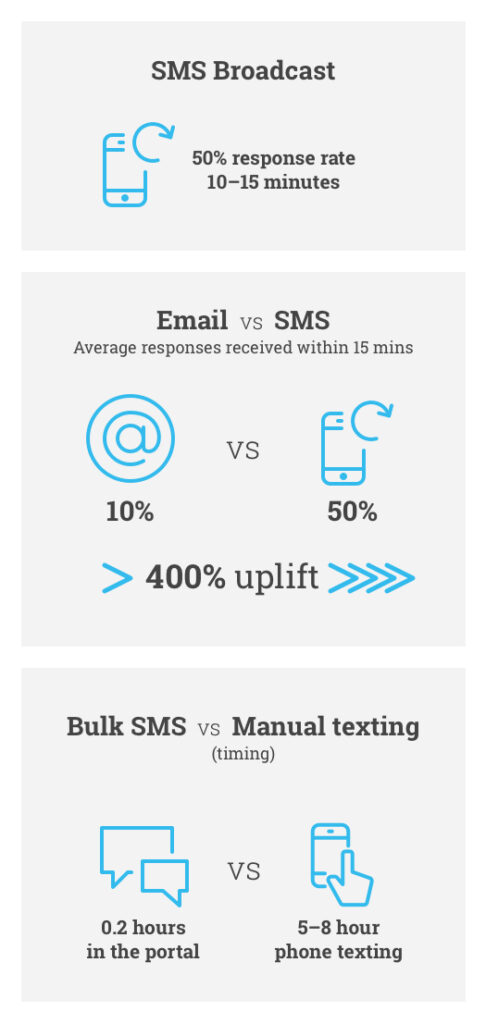
When messaging one region to confirm sizing and orders, Annabelle was seeing a 50% response rate in just 10 – 15 minutes. That’s a 400% increase in response rate from email to SMS. The same recipients had been emailed weeks ago and were followed up via email multiple times to confirm but with minimal to no response. The speedy power of SMS most impacted her volunteers, especially those who had been waiting with backed up scrub orders.
[SMS] was a much clearer and quicker cut-through and that has played a big part in our ability to make a difference on the numbers. Annabelle Parsons, Founder, Rona Scrubs
Using MessageMedia’s bulk send portal was also speeding up the process for the Rona team when compared to volunteers who were choosing to manually text the heroes and angels in their area. For Annabelle, she could cover a whole area such as Ballarat and send out 100 messages within 20 minutes.
When she had tried doing it manually, it was “slow going.” Consequently, when replies came flooding in, she would have trouble keeping track of the recipient’s identity. MessageMedia’s online portal solved this issue by automatically identifying who was responding and enabling Annabelle and her team to easily reply direct from the hub’s inbox.
It was really annoying [texting manually] and was much easier to manage those responses in the hub.
Annabelle Parsons, Founder, Rona Scrubs
In addition, text messaging helped to speed things up in areas where essential workers needed scrubs but fulfilment had drawn to a standstill. This was often due to the fact that there weren’t enough volunteers in the area, or those who had registered were too far away and the team wasn’t able to get fabric to them. The team were flying “a bit blind” with so many areas to fulfil around the country. According to Annabelle, SMS allowed their team to “look under the hood” and track where they could move an overflow of scrubs from one area to another. Being a central distribution point, the team were now able to easily redistribute where scrubs were needed most.
Why it worked
Like our other non-profit case studies that occurred during COVID, SMS proved particularly useful where time-critical communications and versatility were necessary to a comms and tech solution.
There were three other factors that played a huge role into why SMS worked particularly well for Rona Scrubs:
- Mobile mobiles
Healthcare workers, especially doctors, always have their phones on them for critical calls and emergency alerts. Mobile communications are familiar, allow workers to be prompted immediately and in a way that is non-intrusive to their day-to-day activities.
- Speedy response
Our natural trigger since we all became used to a mobile phone in our pockets is to read and respond to that text message. It’s a subtle psychological reaction called nomophobia that’s been with us since the advent and mass spread of mobile technology. We’re conditioned to read and respond to text messages faster than many other communications. SMS is also a direct channel straight from an organisation to a recipient.
- Ease-of-use/familiarity
From the beginning, Annabelle was sceptical about email’s ability to meet their communication needs from confirming orders to moving production along. Text messaging, on the other hand, was already an effective and ubiquitous technology that they regularly used in their work and personal lives.
I have text messaging in my laptop I have the data base there. I have all the sizes there. It was just a matter of three windows open in the one place. It was copy, paste, done. Copy, paste, done.
Annabelle Parsons, Founder, Rona Scrubs
Future use
Orders for new scrubs and registrations for new volunteers have now ceased officially. Annabel believes they were lucky to have finished when they did given the new Victorian restrictions that were enforced in August. If they had continued, distribution would have been difficult and there would have been a necessity for new rounds of donations and support.
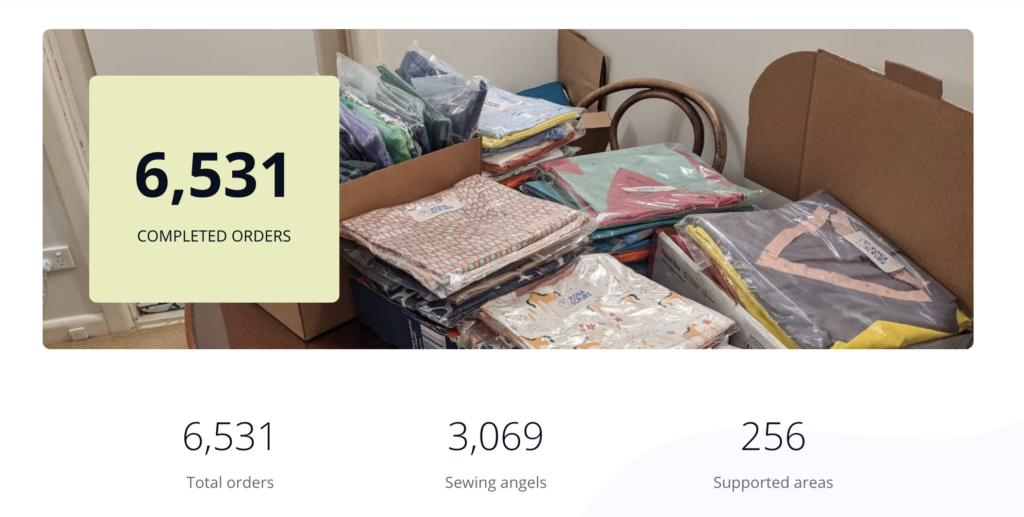
As of October 15th, Rona Scrubs has delivered over 6,500 scrub orders across the country. With an additional surplus, Annabelle is now working to deliver them to local hospitals such as The Alfred, Cabrini hospitals and other healthcare service providers.
![Image for Get your [FREE] SMS trial now.](https://messagemedia.com/wp-content/uploads/2024/02/Signup.webp)
Find out how you can improve your non-profit communications with SMS. Contact us with us now.
